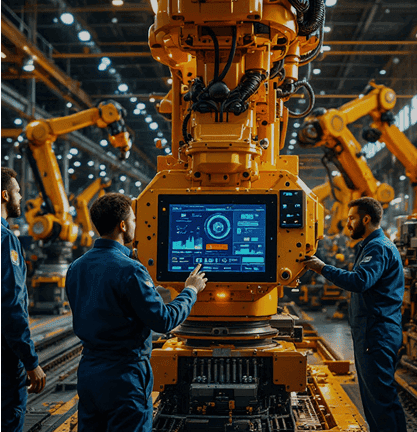(Multi-Agent Architecture Search) Machine Learning Framework that Optimizes Multi-Agent Systems

AI & ML
(MaAS) Machine Learning Framework that Optimizes Multi-Agent Systems
27 Mar, 2025
20 Min read
Large Language Models (LLMs) have become the backbone of multi-agent systems, enabling advanced collaboration among AI agents. According to a 2024 survey by Gartner, over 70% of organizations that adopt AI solutions intend to leverage multi-agent architectures to handle tasks ranging from customer service automation to complex decision-making. Yet, most existing multi-agent methods rely on static, one-size-fits-all designs, leading to inefficient resource utilization, slower responses, and mounting operational costs.

To address these shortcomings, researchers have introduced MaAS (Multi-Agent Architecture Search)—a ground-breaking framework that dynamically tailors multi-agent workflows on a per-query basis, optimizing both performance and resource usage. Below, we explore how MaAS outperforms previous multi-agent approaches, the empirical evidence behind its success, and how organizations can benefit from these developments—especially with support from industry leaders like Stixor, providing AI & ML development services and solutions to help businesses accelerate and optimize their AI deployments.
Challenges with Existing Multi-Agent Frameworks
Existing frameworks like CAMEL, AutoGen, MetaGPT, DsPy, EvoPrompting, GPTSwarm, and EvoAgent optimize specific aspects such as prompt tuning or agent profiling but lack dynamic adaptability. Their pre-fixed designs are designed for certain tasks, leading to:
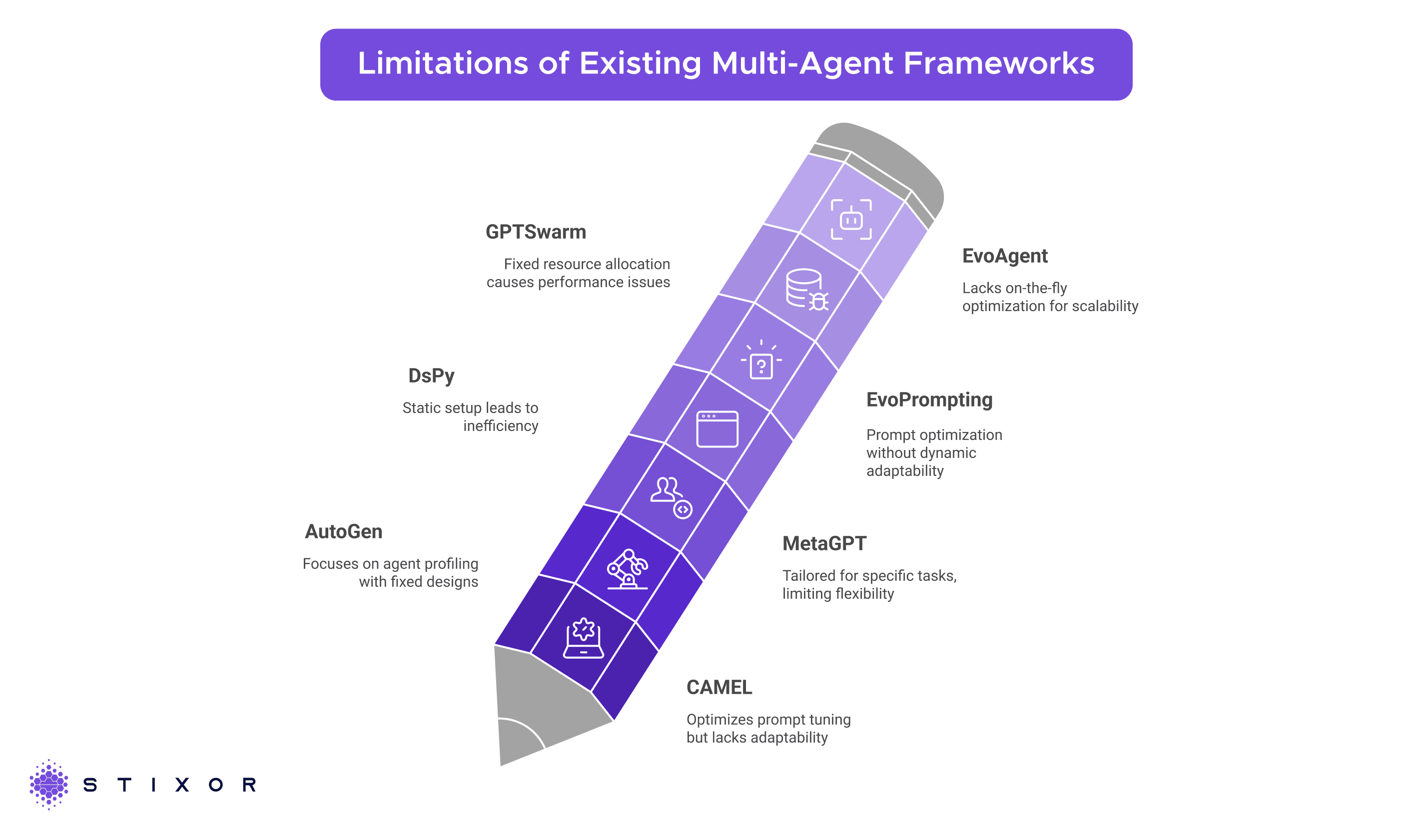
- Limited Flexibility: They tend to over-provision resources for simpler tasks and underperform on more complex tasks, leading to inefficiency and slower response times.
- Increased Costs: Running a large, static multi-agent setup on trivial queries leads to wasted computation, inflating runtime expenses, especially with LLM-based API calls.
- Reduced Scalability: Without on-the-fly optimization, systems can’t effectively scale or reorganize themselves for diverse or evolving workloads.
A 2024 Gartner report highlighted that 43% of AI projects fail due to poor resource allocation, underscoring the need for adaptable frameworks like MaAS.
Introducing MaAS (Multi-Agent Architecture Search)
MaAS (Multi-Agent Architecture Search) provides a probabilistic, query-driven approach that generates custom multi-agent architectures in real time, drawing on a supernet—an overarching repository of agentic operators. When a query arrives, MaAS samples the best-suited combination of agents, tools, and communication protocols, intelligently balancing speed, precision, and resource usage.
Key Innovations
Agentic Supernet
This supernet encodes a wide variety of agentic operators (LLM-powered workflows, specialized prompts, tool integrations) and learning modules.
By learning probability distributions over potential designs, the supernet can systematically explore which configurations work best under different task demands.
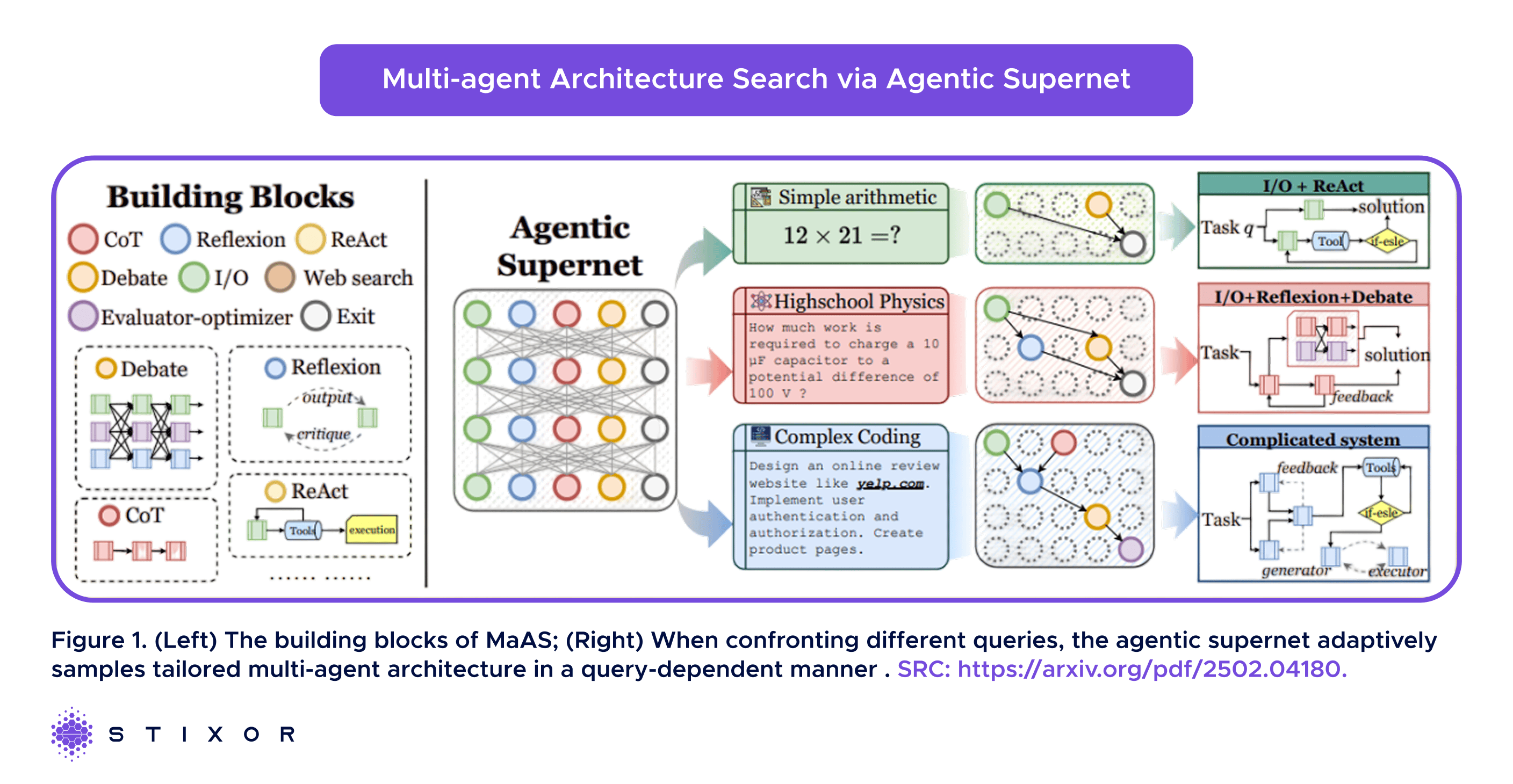
Controller Network (Mixture-of-Experts Style)
A specialized controller conditions on each incoming query to select or omit certain agents.
This mechanism ensures flexible load distribution, activating more sophisticated pipelines only when needed.
Cost-Aware Optimization
In internal tests, MaAS reduced API usage by 12–17% on average compared to static multi-agent designs.
A Monte Carlo-based training loop aligns task performance and cost minimization, preventing overkill solutions that drain resources.
Adaptive Feedback Loop
MaAS refines the supernet via textual gradient-based updates, reinforcing the workflows that consistently yield high utility under given constraints.
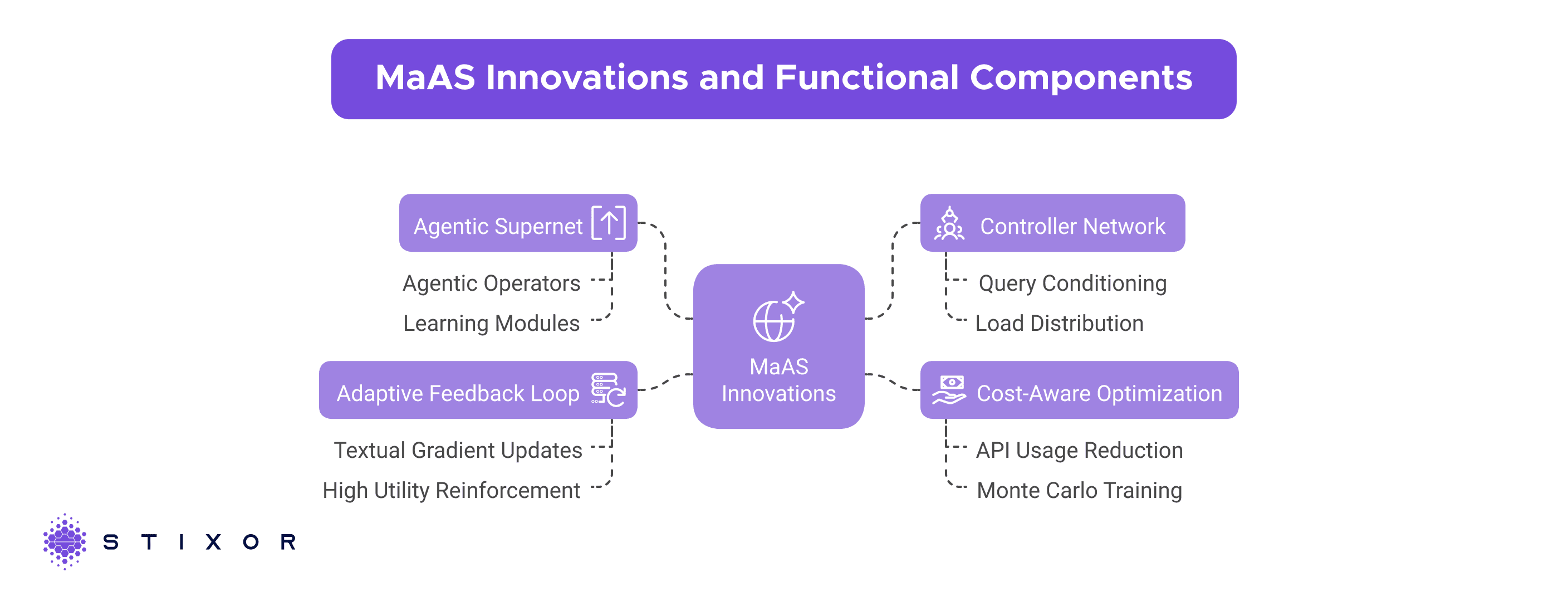
Experimental Results and Performance Metrics
To validate its effectiveness, researchers put MaAS to the test across six public benchmarks spanning three key domains:
Math Reasoning: GSM8K, MATH, MultiArith
Code Generation: HumanEval, MBPP
Tool Use: GAIA
MaAS was compared against 14 baselines, including single-agent methods and handcrafted multi-agent systems. The results speak for themselves:
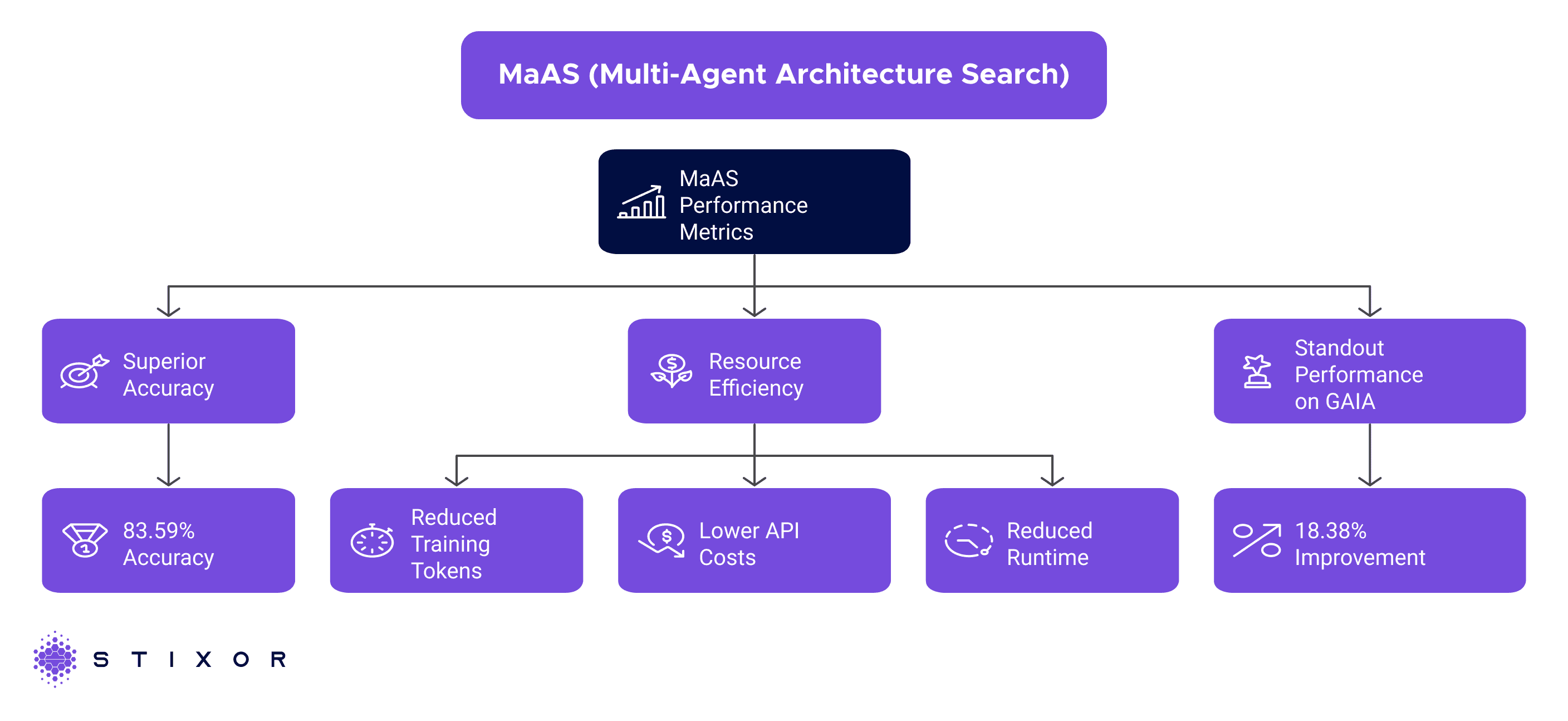
Superior Accuracy: MaAS achieved an average best score of 83.59% across all tasks, outpacing both single- and multi-agent competitors.
Resource Efficiency: Thanks to its context-specific architecture sampling, MaAS required fewer training tokens, lower API costs, and reduced runtime.
Standout Performance on GAIA: On GAIA Level 1 tasks, MaAS outperformed rivals by 18.38%, showcasing its ability to orchestrate complex multi-tool workflows dynamically. The results, detailed in the paper available on arXiv (Multi-agent Architecture Search via Agentic Supernet), are summarized in the following tables:
Performance Comparison Table (Select Benchmarks, gpt-4o-mini base LLM)
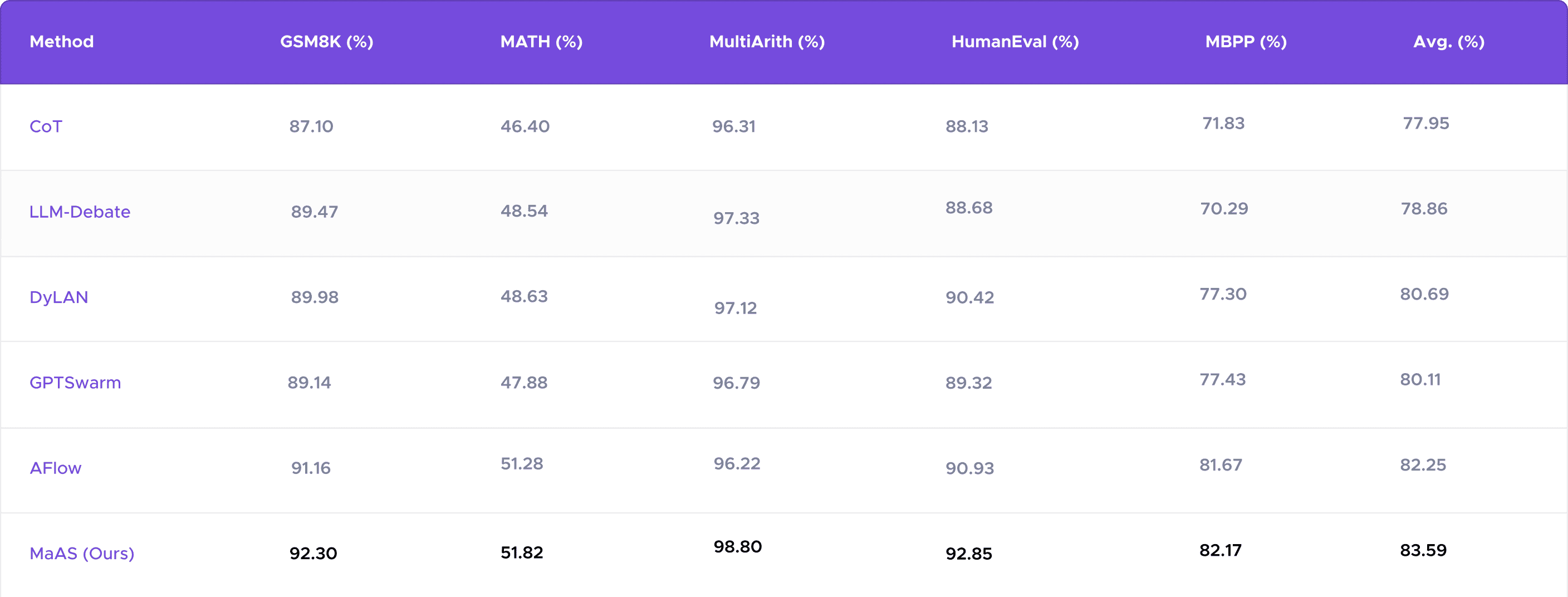
GAIA Benchmark Comparison Table

Cost Analysis (MATH Benchmark, Select Metrics)
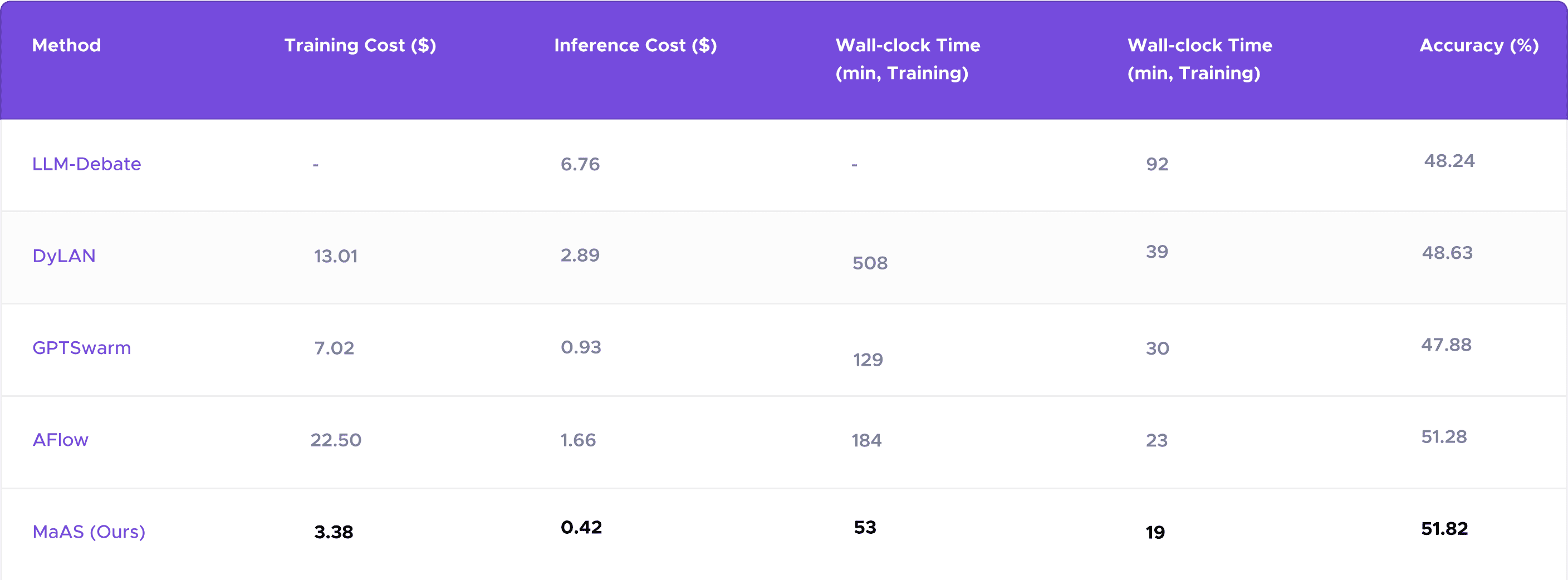
How MaAS Overcomes Traditional Obstacles
MaAS addresses the core weaknesses of static multi-agent frameworks:
Dynamic Multi-Agent Architectures: Rather than relying on static designs, MaAS tailors the agentic layout for each query, ensuring no wasted overhead.
Adaptive Complexity: The supernet’s controller scales up or down the complexity of the multi-agent pipeline, allowing for low-cost handling of trivial queries and high-precision handling of complex queries.
Scalability & Self-Organization: MaAS’s automated approach can expand with new operators or agent roles, offering a clear path to future extensibility.
Balancing Speed, Cost, and Precision: By incorporating cost-awareness into the empirical Bayes Monte Carlo optimization, MaAS actively trades off between computational expense and accuracy, as evidenced by its cost reductions on the MATH benchmark.
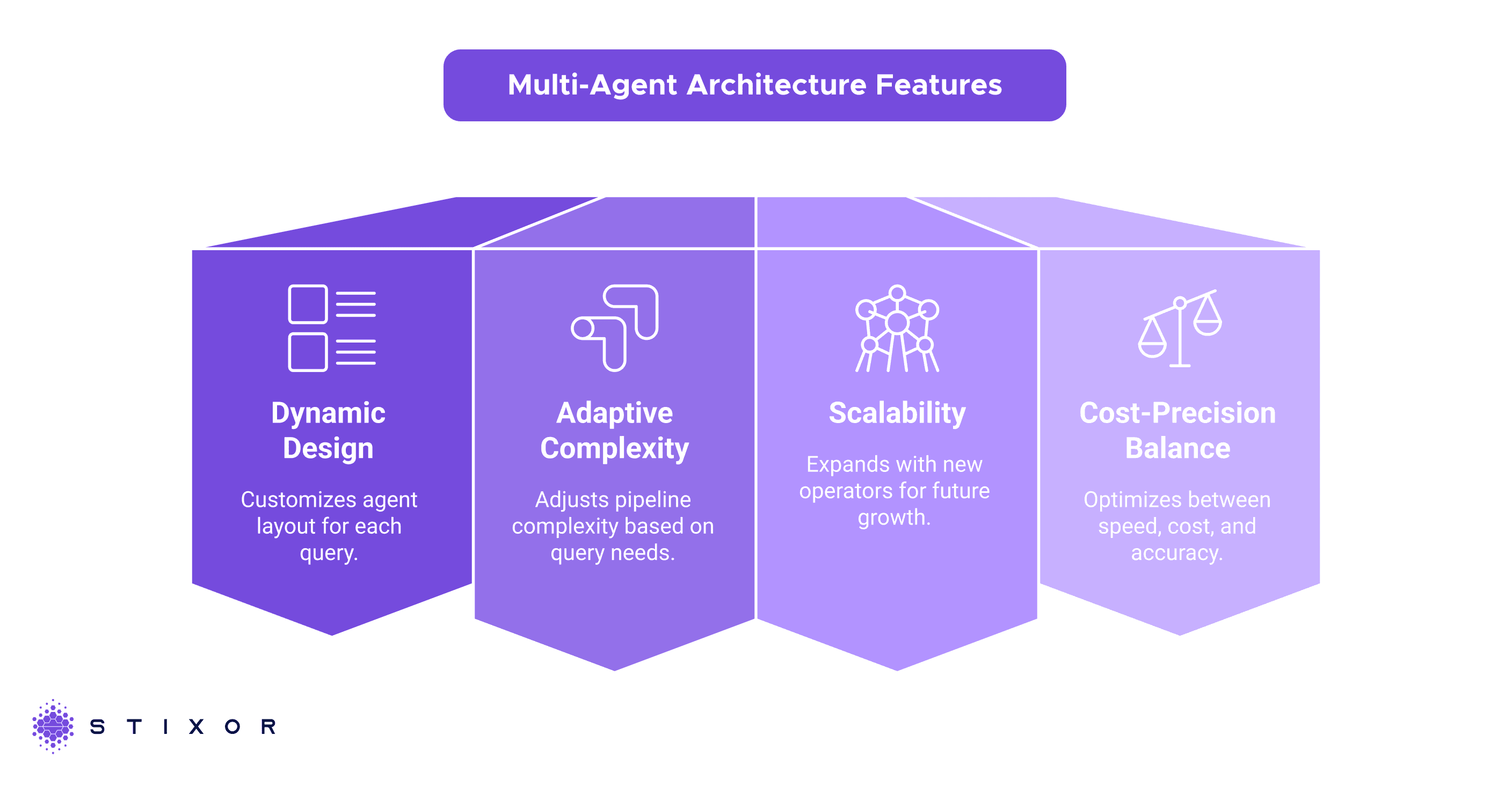
Future Directions and Industry Impact
While MaAS already demonstrates strong performance and efficiency, ongoing work could include:
Refined Sampling Strategies: Further optimizing how the controller network samples architectures, potentially integrating reinforcement learning or advanced Bayesian methods.
Domain Adaptability: Extending MaAS to handle domain-specific constraints, such as robotic hardware limits, real-time sensor data, or specialized datasets in legal/financial sectors.
Real-World Validations: Beyond simulations, verifying MaAS on large-scale production systems, such as e-commerce chatbots, logistics pipelines, or autonomous fleets.
Enhanced Interpretability: Providing transparency into how the controller picks operators, enabling teams to troubleshoot or manually intervene for critical tasks.
Gartner predicts that by 2026, 60% of enterprises will use dynamic AI architectures like MaAS to reduce operational costs by 30-50%, highlighting its potential industry impact.
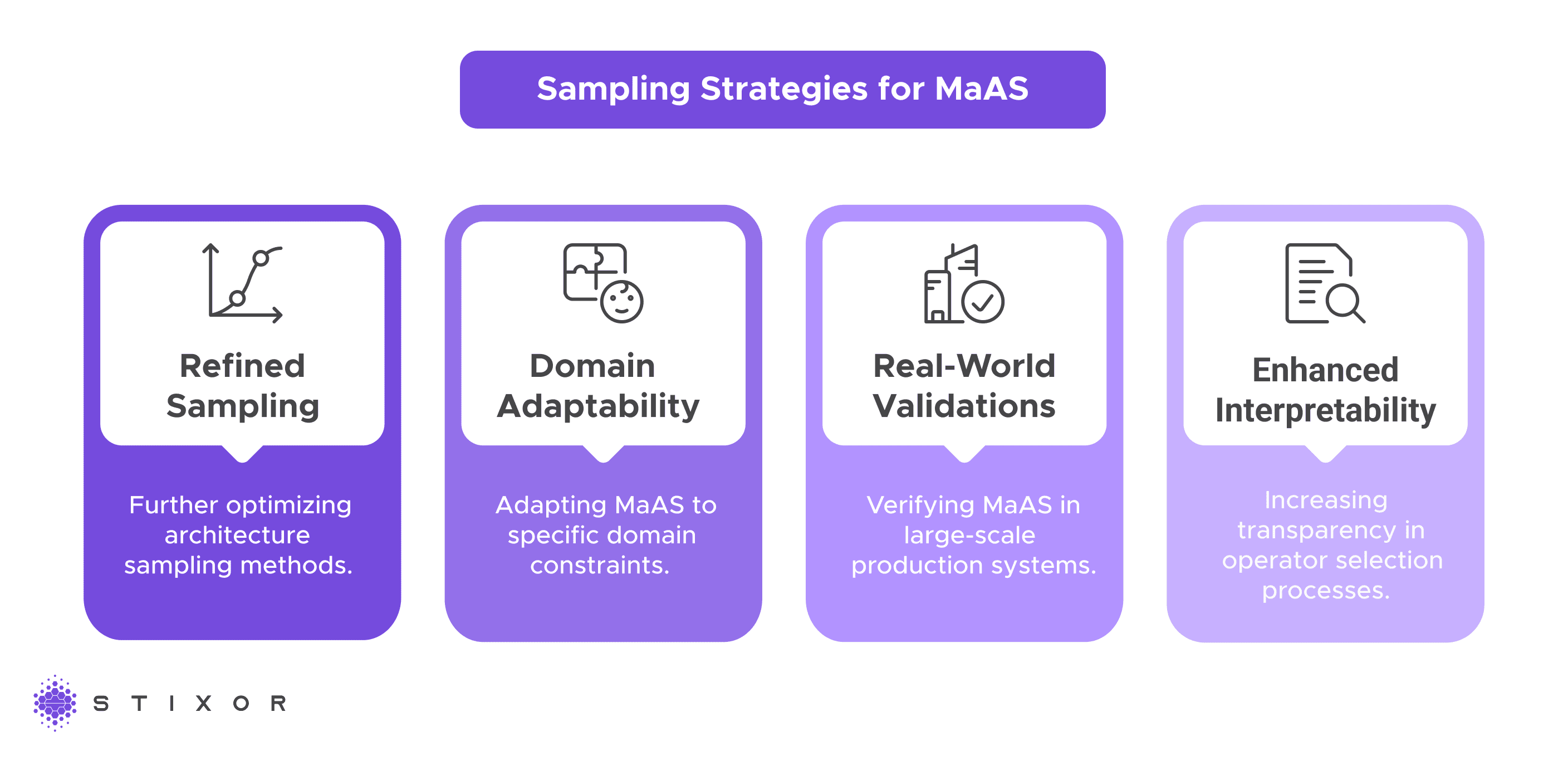
Strategic Advantage with Stixor’s AI/ML Expertise
At Stixor, we integrate cutting-edge frameworks like MaAS into bespoke AI solutions, ensuring businesses harness:
Cost-Efficiency: Optimized token usage and API expenditure, as demonstrated by MaAS’s 85% reduction in training costs.
Scalability: Dynamic agent workflows adapting to workload fluctuations, ideal for industries like fintech, logistics, and IoT.
Precision: Context-aware architectures for superior accuracy, enhancing applications in healthcare and e-commerce.
Why Partner with Stixor?
Stixor specializes in AI & ML development services, offering:
Custom Multi-Agent Pipelines: Tailored implementations for specific industry needs, leveraging MaAS’s adaptability.
End-to-End Support: From architecture design to deployment and monitoring, ensuring seamless integration.
Future-Proof Solutions: Staying ahead with adaptive systems that evolve with AI advancements, positioning clients for long-term success.
Contact us today to explore how Stixor can transform your AI strategy with innovative, adaptive solutions, available at Stixor AI & ML Services.
Conclusion
MaAS redefines multi-agent systems by marrying flexibility with efficiency. Its query-driven approach addresses the pitfalls of static frameworks, offering scalable, cost-aware solutions for tomorrow’s challenges. With Stixor’s expertise, businesses can leverage such advancements to stay competitive in the rapidly evolving AI landscape.
In this article
- Challenges with Existing Multi-Agent Frameworks
- Introducing MaAS (Multi-Agent Architecture Search)
- Key Innovations
- Agentic Supernet
- Controller Network (Mixture-of-Experts Style)
- Cost-Aware Optimization
- Adaptive Feedback Loop
- Experimental Results and Performance Metrics
- Performance Comparison Table (Select Benchmarks, gpt-4o-mini base LLM)
- GAIA Benchmark Comparison Table
- Cost Analysis (MATH Benchmark, Select Metrics)
- How MaAS Overcomes Traditional Obstacles
- Future Directions and Industry Impact
- Strategic Advantage with Stixor’s AI/ML Expertise
- Why Partner with Stixor?
- Conclusion


